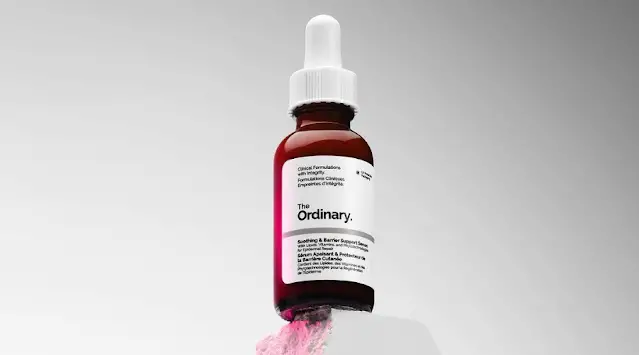
What does salicylic acid do for your skin?
I’ll be the first to admit that the sheer variety of skincare ingredients can often be dizzying and confusing. When it comes to finding the best ingredients to combat skin issues, especially if your main concern is acne, pimples, and breakouts, you’ve undoubtedly heard of salicylic acid.
Salicylic acid is an effective heavyweight in the skincare world, whether it’s an over-the-counter product or a professional peel. It’s derived from willow bark and is classified as a salicylate ingredient. Known for its complex structure, figuring out how it works on the skin can be daunting. It’ll give you a better idea of what it does to your skin overall. It’s a member of the BHA family, also known as beta hydroxy acid, and is the most common, found in nearly every skincare product designed to combat acne and breakouts.
There are two classes of acids used in skincare formulas: AHAs and BHAs. The two groups of acids are slightly different because of the way the molecule is separated from the acid. Alpha hydroxy acids separate the acid from one carbon atom, while beta hydroxy acids use two carbon atoms. This means that BHAs essentially have more impact and penetrate deeper into the lower layers of the skin. For example, salicylic acid is oil-soluble, which means it can slough off layers of dead skin cells while penetrating deep into the pores to remove dirt, bacteria, and excess sebum. Salicylic acid is very effective at helping improve skin clarity, but it can also tend to cause some dryness, especially if you have a skin type that’s prone to sensitivity and redness. Performing a 24-hour patch test before applying a new product to your face will help prevent unwanted skin reactions.
If you want to learn more about salicylic acid and its benefits, you can read our dedicated blog post.
Is it OK to use salicylic acid every day?
In short: yes, but always listen to your skin. If you find that your skin feels comfortable and looks clear, you can use salicylic acid every day. Some people can even use it twice a day once their skin can tolerate it.
The percentage of this BHA in individual products varies greatly from brand to brand. This can sometimes affect how sensitive your skin will be to using different products. That’s why we think it’s so important to perform a patch test on your skin first. If you still experience signs of irritation, it’s best to stop using salicylic acid products for a day or two and use a serum rich in hyaluronic acid instead. Once your skin has improved and there are no more signs of irritation, you can try to slowly reintroduce the product.
Is salicylic acid harmful to the skin?
No, not really, but it can irritate the skin if not used correctly. Salicylic acid is great for oily skin that is prone to rashes. If you have a drier skin type that is more susceptible to sensitivity, BHAs may be too harsh on the skin. Since salicylic acid works deep within the pores to remove excess sebum, it can be very drying to the skin, which can cause excess sebum production if you find that your face is over-oiled, leading to more irritation and rashes.
The best way to reap the benefits is to slowly introduce salicylic acid into your daily routine, once a week, preferably in the evening. This helps build tolerance and avoid unwanted reactions.
Can salicylic acid remove dark spots?
Yes, it will! Salicylic acid can remove dark spots due to the exfoliating properties of BHAs. When dead skin cells build up on the surface of the skin, the complexion begins to look dull and lackluster. You will also notice that more breakouts and flaky patches appear on the skin, and dark spots appear more pigmented. Salicylic acid can remove dark spots by removing layers of dead skin. The more it removes, the lighter the dark spots will become.
Salicylic acid can’t completely remove dark spots, but if you combine a powerful BHA with vitamin C, retinol, and hyaluronic acid into your daily routine, and wear sunscreen every day, you’ll find that your complexion looks brighter, more hydrated, and your skin tone is more even. Of course, keep in mind that these recommended skin ingredients should only be used in your daily routine after consulting a doctor or dermatologist.
Can I use a moisturizer after using salicylic acid?
Absolutely. Using a moisturizer after using salicylic acid is a great way to restore the skin barrier while creating a physical barrier on the surface of the skin. If you choose a moisturizer with ingredients such as hyaluronic acid, make sure the water and oil content of the skin’s protective barrier is sufficient and it scavenges free radicals, such as pollution, UV rays, and bad weather.
Should salicylic acid be used in the morning or at night?
It depends on you and your skin type, as some people find that using BHA too frequently can cause irritation and dryness. However, if your skin has developed a tolerance, you can use salicylic acid morning and night. Skin experts recommend switching up the formulation of products containing acids to thoroughly cleanse your skin while avoiding unwanted reactions. Try using a salicylic acid-rich toner in the morning, and opt for a serum with active acids in the evening. It is thought to be best to use a serum at night, as the higher concentration of acids can work undisturbed without exposure to free radicals.
So, you can learn more about the effects of salicylic acid on your skin here. If you have any other skin care questions, don’t forget to follow us on Instagram. We look forward to seeing you there!


